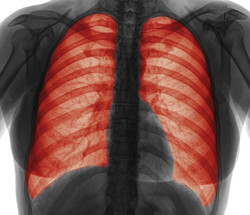Cellular stress and lung diseases
In the lung, DCs are key coordinators of the immune response to several inflammatory diseases including asthma. Various triggers of inflammation induce improper protein folding. The EU-funded LUNG DCS UNFOLD project aimed to elucidate factors contributing to DC homeostasis and the development of inflammatory lung diseases. Endoplasmic reticulum (ER) stress is a process of accumulation of misfolded proteins within the ER. To prevent the detrimental effects of ER stress, cells have a signal transduction pathway called unfolded-protein response (UPR). The hypothesis behind the project was that activation of the UPR acts as a danger signal that triggers DC involvement in inflammatory lung diseases. The most conserved UPR sensor is the protein — inositol-requiring transmembrane kinase/endonuclease-1 (IRE-1alpha). Upon activation, IRE-1alpha cleaves the mRNA for transcription factor X-box binding protein-1 (XBP1) causing a shift in its reading frame yielding a potent mutant (XBP1s) involved in ER biogenesis. Researchers discovered a tightly regulated feedback circuit involving IRE-1alpha and XBP1 that controls the homeostasis of CD8alpha+ DCs. Scientists also evaluated the induction of the UPR in DCs in response to the environmental inducers: house dust mite allergen (HDM), lipopolysaccharide (LPS), cigarette smoke extract, and diesel exhaust particles. Of those, HDM and LPS triggered induction of the UPR chaperone BIP (immunoglobulin-heavy-chain-binding protein (BIP) and activation of XBP1. This is a very interesting finding given that HDM and LPS are potent triggers of asthma. ORMDLs are ER-resident proteins and their link with UPR emerges from studies in ORMDL-deficient yeast, which display constitutive ER stress. ORMDL3 is the first component of the UPR that has been directly associated with asthma. Researchers developed ORMDL3 conditional knockout mice during the course of this project. Expansion of this colony is ongoing to ensure adequate availability of such mice for asthma experiments. Project activities led to important discoveries in the regulation of DC homeostasis and the creation of valuable tools for future research. This also opens up new avenues for investigating the role of ER stress in the development of asthma.







